How To Create Availability Set In Azure
This web log post explains how to create an availability set in Azure and how to assign a VM to an availability set up. If you want to get directly into the walkthrough y'all can skip straight to setting up an availability set merely if you would like to larn the basics we will go through that first.
What is an Availability Set
An availability set up in Azure is substantially your way of designing how bachelor your cloud infrastructure is going to be in the event of unplanned or planned maintenance. Why practise nosotros care about maintenance if our workloads are in a public cloud? Well, only because your workloads are running in a public cloud doesn't mean they don't have maintenance windows or hardware failure like on-prem solutions. And so if yous don't want your awarding servers all going down at the same time, you may specify with an availability set how your servers will handle both maintenance updates and hardware failures. We will demo how to create and apply an availability set in Azure. Simply first, there are some terms that we need to understand before we create our availability fix.
Fault Domain
Assigning a VM to a separate fault domain will place it on a carve up power and network resource. This is very important in the example of an unplanned outage due to power or hardware failure (yep this does happen). Brand certain you do your homework and plan for "what ifs" when designing your deject environs.
Update Domain
Just like on-prem infrastructure, deject infrastructure needs to exist patched and updated. Azure will only restart items in i update domain at a time. When the infrastructure assigned to the update domain is rebooted, it is given 30 minutes to recover before maintenance is initiated on a different update domain. So make sure y'all programme your update domains accordingly so you're non taking down the entirety of your environment all at in one case.
Managed Disks
I don't desire all my storage to be on the aforementioned hardware device, how tin I tell Azure to separate them? This is where managed disks come into play. By selecting the option to use Managed Disks when creating an availability set, you are essentially telling Azure to place each deejay on isolated storage clusters to forestall a single point of failure. If you lot're using VMs with unmanaged disks, Microsoft highly recommends converting them over to Managed disks if they are in an availability set.
Creating an Availability Gear up
To create an availability set, login to the Azure portal and select Create a Resource in the upper left corner. Type in Availability Gear up and select it. Click on Create:
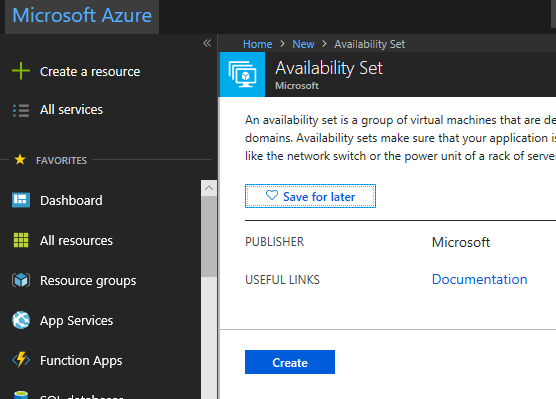
Now we can set up upward our availability set. In the example, I'll name information technology "LukeLabavaset1".
Select your subscription and resource grouping that you'd similar to bind this availability set to, then select the location.
Now, hither comes the important function. We need to specify the number of fault domains and update domains that we would like for this availability set. The way this works is the first VM gets assigned the first bachelor fault domain and update domain which volition be slot 0. Then, the side by side VM assigned to the availability prepare takes the next bachelor slots. So it would become fault domain ane and update domain ane. In our example, we are creating 2 fault domains and two update domains. If a third VM was assigned to this availability set, the assignment rotation would outset over, then it would get assigned to fault domain 0 and update domain 0. Select create to deploy this availability set:
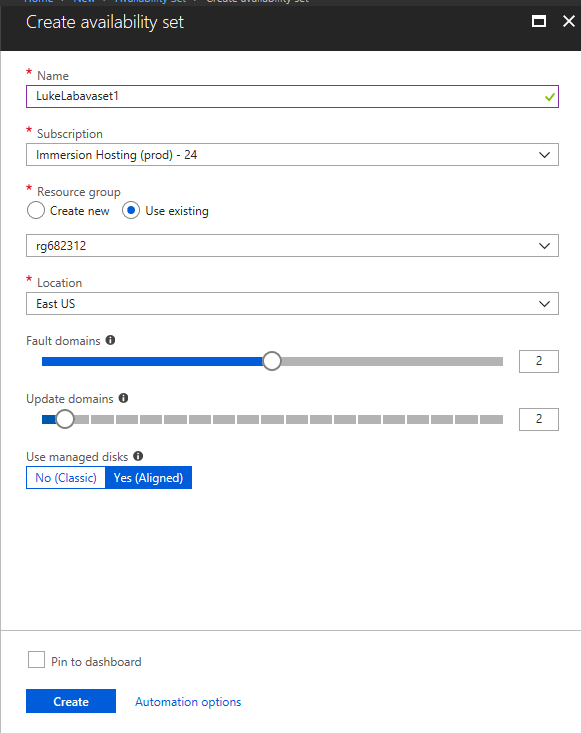
Assigning a VM to an Availability Set
It's of import to note that a VM tin only exist assigned an availability prepare during the VM creation process. To create our VM, we will select Virtual Machines on the Favorites carte and click Add. We desire to create a 2022 server, and then we type in Windows Server 2022 and select Windows Server 2022 Datacenter:
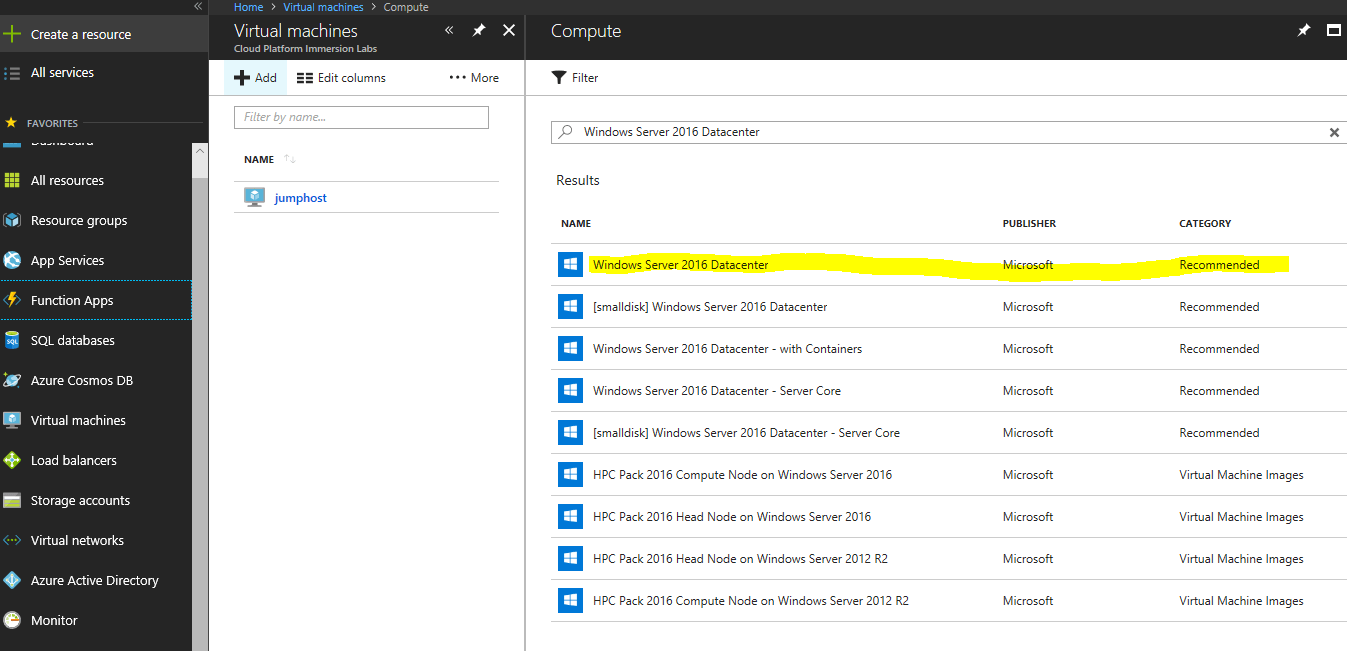
We go a new bract with details on the VM that nosotros are deploying. Select Create to deploy:
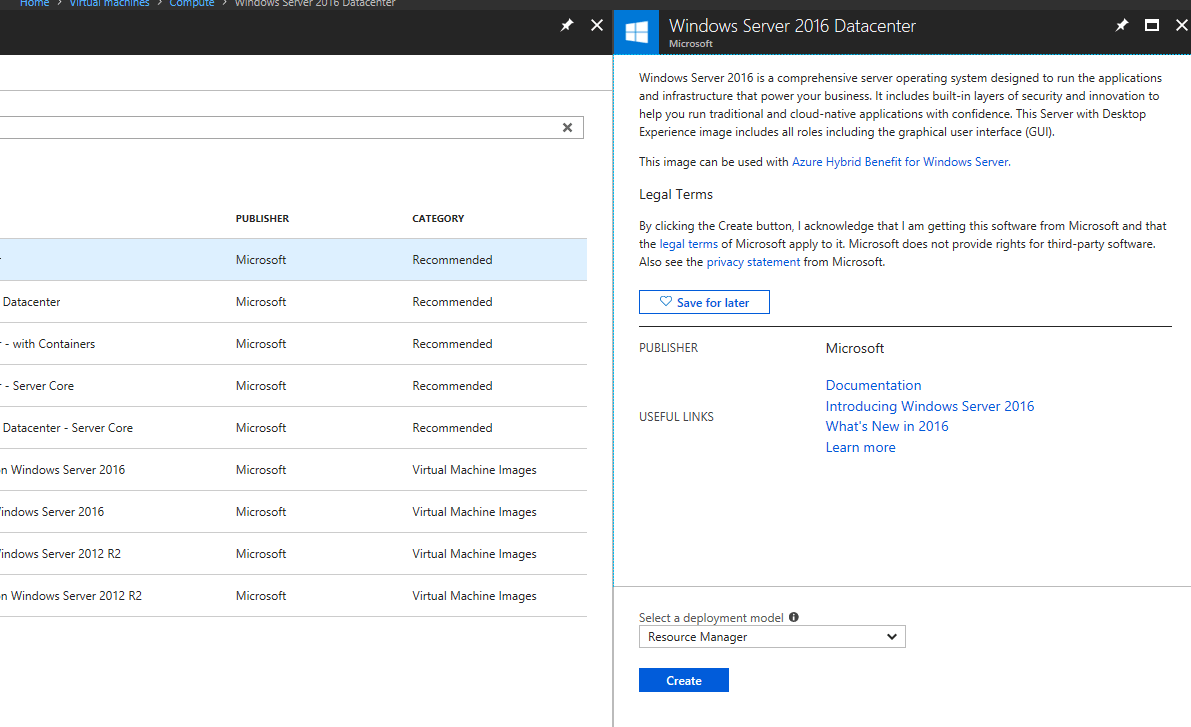
At present let's fill in the basic info. In this case, I'll name my VM "LukeLabApp1". Fill up in all the required info and select OK:
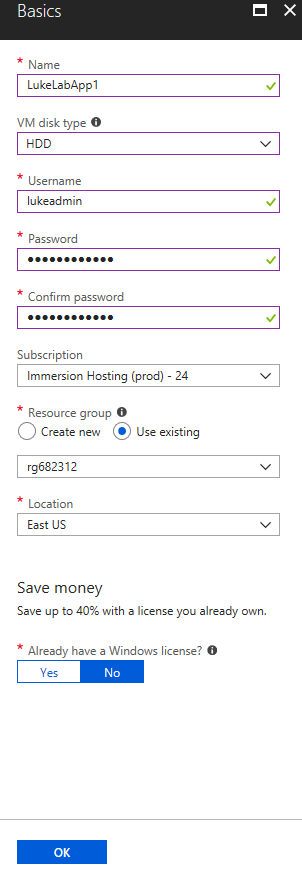
At present nosotros will choose our VM size and click Select:
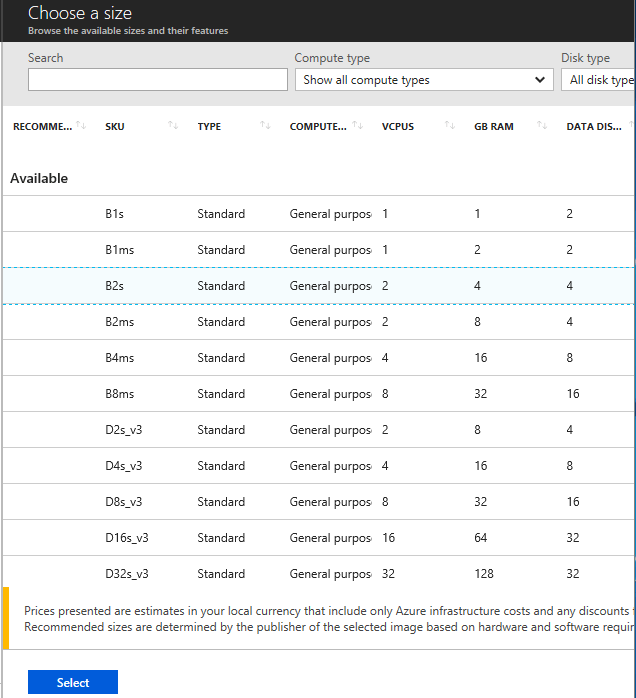
For the last stride, we tin now add together the availability set to our VM. Click on availability fix, and select the one we created, LukeLabavaset1. Next, configure the residuum of the settings for your VM and select Create:
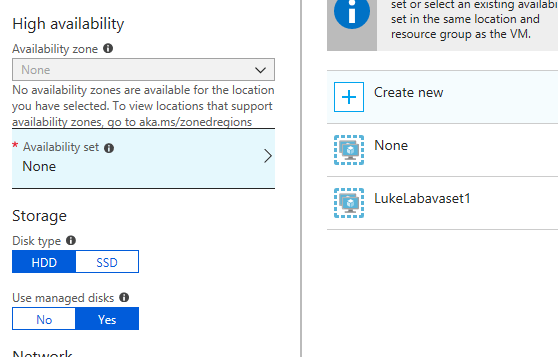
Later the VM is completely deployed, nosotros can check and run into the availability set settings by selecting Availability Prepare in the VM settings blade. We can meet our kickoff VM has to take slot 0 of both the error domain and update domain. Detect the warning stating that we tin can't configure the availability set anymore unless we create the VM, this is very important to understand when planning your deject infrastructure:
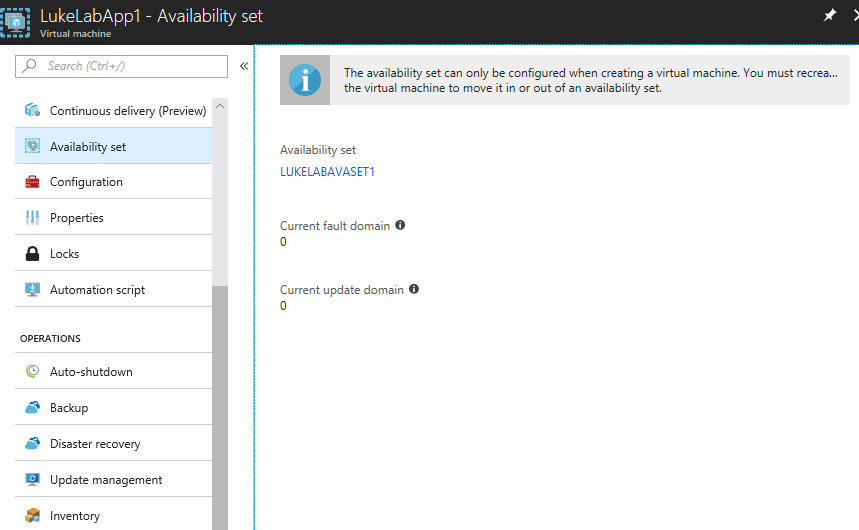
Now I made a 2nd VM called LukeLabApp2 and assigned information technology to the same availability set. Yous can come across it took upwardly the next available slot for both the mistake domain and update domain:
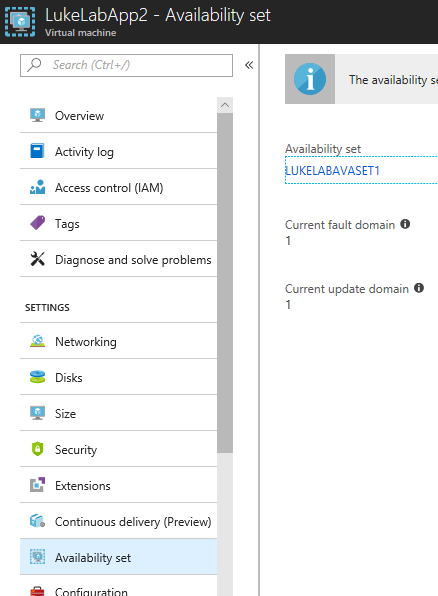
Wrap-Upwards
Availability sets are a very important slice of Azure infrastructure and it's very important to have a good concept of them earlier designing and implementing your infrastructure in the deject. If you lot have already created your infrastructure without properly planning the mistake domain and update domains, unfortunately, you lot will have to re-create the VM again in order to change the availability sets. However, at that place is a PowerShell script that will automatically save the settings and recreate the VM with the new availability set. Be sure to check it out and let me know how it works in the comments below.
Thanks for reading!
How To Create Availability Set In Azure,
Source: https://www.altaro.com/hyper-v/availability-set-azure/#:~:text=To%20create%20an%20availability%20set%2C%20login%20to%20the%20Azure%20portal,set%20up%20our%20availability%20set.
Posted by: colemanrefor1937.blogspot.com


0 Response to "How To Create Availability Set In Azure"
Post a Comment